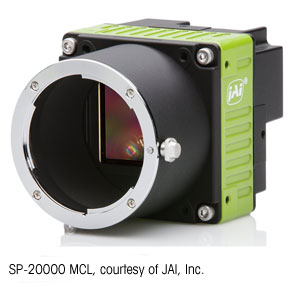
For imaging applications that need to measure multiple colors, white LED lights have supplanted halogen and fluorescent lights for a number of reasons, including LEDs’ ability to offer a wider range of colors and varieties of “white” light, also referred to as the color temperature.
Color machine vision has its challenges.
Systems can produce three times the data (or less than one-third the resolution) of a monochrome camera solution. Color can introduce more potential sources for imaging errors, more complexity, more cost, and require careful engineering that reduces the system’s flexibility to deal with lines that make products of varying shape, colors, and size. In fact, if designers can find a way to use filters and lighting to measure a colored area using monochrome cameras, they usually do.
When customers come to JAI to discuss a color application, Kinney starts by asking what sort of spatial accuracy the system needs versus color accuracy. “It also depends on data rate,” he adds. “If you need absolute color accuracy of less than 1%, then we usually look at a three-CCD prism camera solution. If spatial accuracy over a wide inspection area is more important, then a very-high-resolution single-chip Bayer camera may be better. If you need high speed, CMOS offers higher frame rates and multi-line sensors with NIR capability and is very effective for high-speed printing applications where colorimetry measurements are very important because NIR can help you judge between true black ink and black made by combining cyan-magenta-yellow inks. And for some printing applications, knowing the difference is important for quality purposes.”
refer to:http://www.visiononline.org/vision-resources-details.cfm/vision-resources/Is-Your-Machine-Vision-System-Color-Blind/content_id/4333
